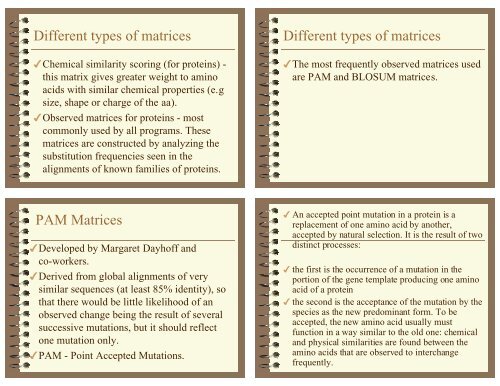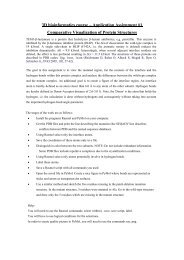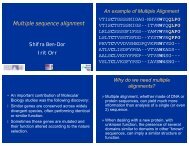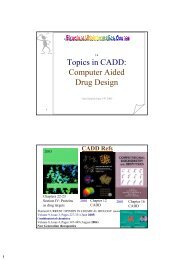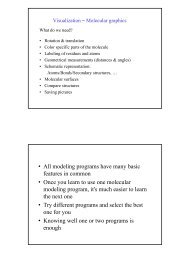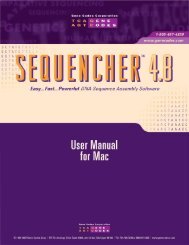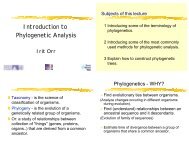Scoring Matrices Scoring matrices Scoring matrices Different types ...
Scoring Matrices Scoring matrices Scoring matrices Different types ...
Scoring Matrices Scoring matrices Scoring matrices Different types ...
Create successful ePaper yourself
Turn your PDF publications into a flip-book with our unique Google optimized e-Paper software.
<strong>Different</strong> <strong>types</strong> of <strong>matrices</strong>Chemical similarity scoring (for proteins) -this matrix gives greater weight to aminoacids with similar chemical properties (e.gsize, shape or charge of the aa).Observed <strong>matrices</strong> for proteins - mostcommonly used by all programs. These<strong>matrices</strong> are constructed by analyzing thesubstitution frequencies seen in thealignments of known families of proteins.<strong>Different</strong> <strong>types</strong> of <strong>matrices</strong>The most frequently observed <strong>matrices</strong> usedare PAM and BLOSUM <strong>matrices</strong>.PAM <strong>Matrices</strong>Developed by Margaret Dayhoff andco-workers.Derived from global alignments of verysimilar sequences (at least 85% identity), sothat there would be little likelihood of anobserved change being the result of severalsuccessive mutations, but it should reflectone mutation only.PAM - Point Accepted Mutations. An accepted point mutation in a protein is areplacement of one amino acid by another,accepted by natural selection. It is the result of twodistinct processes: the first is the occurrence of a mutation in theportion of the gene template producing one aminoacid of a protein the second is the acceptance of the mutation by thespecies as the new predominant form. To beaccepted, the new amino acid usually mustfunction in a way similar to the old one: chemicaland physical similarities are found between theamino acids that are observed to interchangefrequently.


